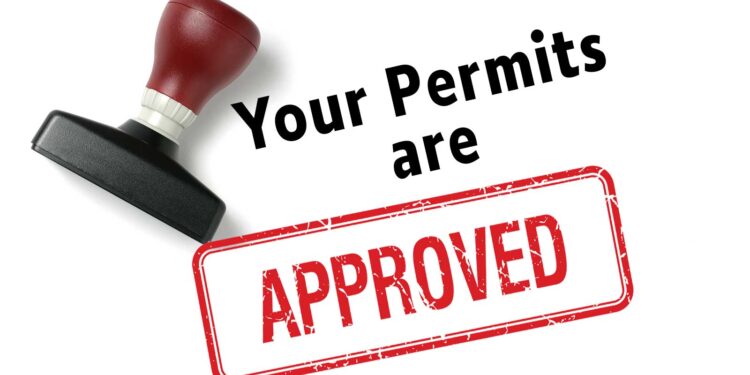Asian Flight Permit Requirements 101 – Part 1: General Considerations

This business aviation blog post is part of a series on permit considerations for Asia.
Be prepared to deal with numerous permits requirements when traveling to and within Asia. You can expect that overflight and landing permits are needed for both private non-revenue and charter (non-scheduled commercial) operations. You’ll deal with various complexities in the permit process based on factors like type of flight, routing, country of origin, etc.
The following is an overview of what you need to know:
1. Permit requirements and routing dependancies
Examples of countries requiring overflight and landing permits include Russia (Eastern Russia), China, Singapore, South Korea, Taiwan, Philippines, Malaysia, Myanmar, Vietnam, Indonesia, Laos, Cambodia and Thailand. Keep in mind that one permit may impact other permits, and you’ll need to use routings that all relevant Civil Aviation Authorities (CAAs) accept. If there’s a denial of one permit you’ll need to make revisions to your routing to ensure it does not impact other permits. China, for example, has specific entry/exit flight information regions (FIRs) that it will accept for operations to/from Russia or Mongolia. Most Asian countries will not accept direct routings, and you’ll always need to use approved airways. Be mindful that there are altitude level restrictions to consider for China and cruise speed restrictions when transiting South Korea and Vietnam.
2. Permit lead times
Lead times for permits in this region vary from two to 10 business days and are often longer for charter flights. Indonesia, for example, requires 10 business days to process permit requests, and Singapore has extended lead times in the case of charter permits. Military airports in India require 15 or more business days lead time for permits. If you’re operating to a joint use civil/military airport in Japan for tourism purposes, permit lead time is 10 business days versus just three business days for business-related flights. Best practice, when traveling to Asia, is to try to plan on at least two weeks lead time for permit requests.
3. Permit processing
Permits are processed by the relevant CAA. CAAs, in this region, are normally open standard business hours Monday – Friday and closed on weekends and holidays. While many CAAs have after hours personnel on duty, this is usually only to accommodate emergency flights. As long as all required information/documentation is provided, with the original request, permits are often processed faster than official lead times – particularly in cases of emergency, air ambulance, or weather-related (i.e., typhoon) requests. Keep in mind that there will still be minimum lead times required even for short notice/emergency permit requests and revisions.
4. Information/documentation requirements
Permit documentation requirements vary country to country, so it’s always important to confirm requirements in advance. Documentation typically includes airworthiness and registration certificates, insurance certificate, and noise certificate. Other mandated information includes full schedule, complete crew/passenger/operator information, routing and FIRs, purpose of flight, visa information (for military landing permits in India), and – in some cases – local business contact information and/or speed/altitude.
5. Unique documentation requirements
Always check with your trip support provider, and/or ground handler, on any unique documentation requirements at your intended destinations. The Philippines, for example, requires a color photograph of your aircraft before a landing permit will be processed. For a Japan charter permit you’ll need to supply CAA with a signed copy of the charter agreement. Some CAAs want to see wet or dry lease agreements for charter operations as well as documentation showing the relationship between the owner and the aircraft. China mandates that operators provide a letter from a local business sponsor in order to process a landing permit. Hong Kong is very specific on aircraft liability insurance requirements, and your policy must include specific verbiage and coverage. For travel to Myanmar you’ll be subject to routing restrictions, and few airports are open to international general aviation (GA) travel.
6. Charter vs. private non-revenue permits
CAA’s in Asia, in general, are more stringent on charter permit requirements and usually require additional documentation. In many cases you’ll need to supply enhanced documentation, such as specific liability insurance coverage, charter agreements, dangerous goods onboard statement, operational specifications, air operator certificate (AOC) and/or Form 298. Particularly when operating charters to the Asian region, it’s important to confirm all documentation requirements in advance with your trip support provider. For both private non-revenue and charter operations, to certain countries in the region, you’ll need to provide CAA with a local business contact that’ll be “responsible” for your flight. It’s important that this business contact has current information on your flight, purpose of flight, crew and passenger details, and schedule. This business contact should also be kept abreast of any changes. If CAA determines that information provided by the operator and business contact do not match they may cancel your permit.
Conclusion
When planning a trip to Asia, particularly for first time operators, it’s best to provide at least two weeks lead time in order to process permits and arrange required aircraft services. It’s important to ensure that all required information is submitted with the original permit request and that all mandated documentation is correct and valid.
Questions?
If you have any questions about this article or need help arranging permits for this region, contact me at larrywilliams@univ-wea.com.
Stay tuned for Part 2, which covers considerations for permits in Asia.




